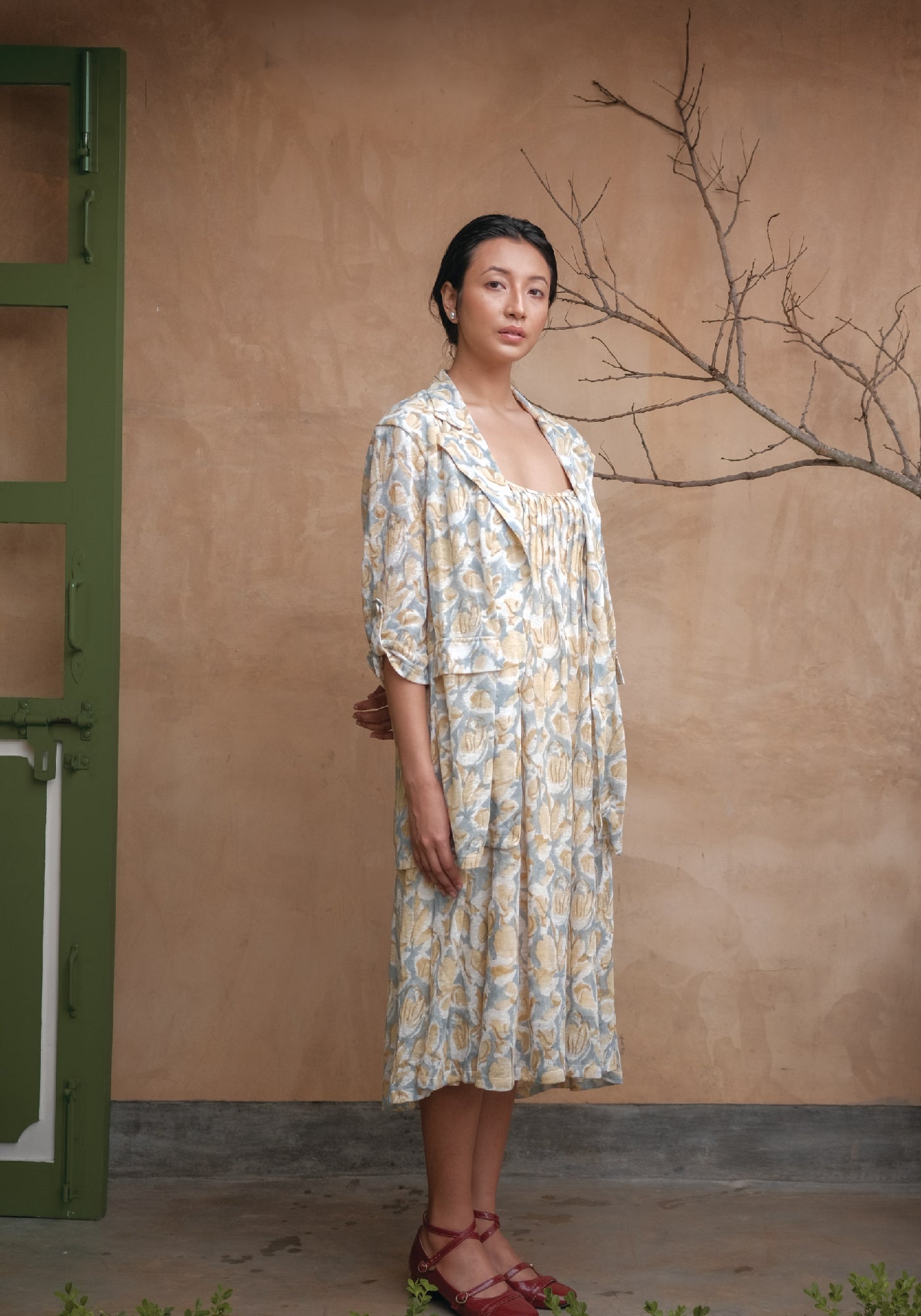Exploring the Craft of Sustainability
Sustainability is one of those words that gets thrown around a lot. But here at Almond Story, every choice from the fabrics we source to the dyes we use is carefully considered with the planet in mind. Our commitment is grounded in using natural materials and environment friendly dyes.
GOTS is like the Michelin star of the textile world, but for eco-friendly fabrics. The Global Organic Textile Standard (GOTS) is the leading worldwide certification for organic fibers. It ensures that textiles meet strict environmental and social criteria, from the harvesting of raw materials to the final manufacturing processes. That means fair wages, ethical production, and, most importantly, no toxic nasties in your clothes. We ensure fair wages by dedicating an average of 30% or more of each piece to our artisans, valuing their skills and craftsmanship because they deserve more than just a pat on the back for their craftsmanship!
GOTS certified dyes are like the superhero team your clothes deserve—free from harmful chemicals, heavy metals, and toxic substances. These dyes won’t sneak pollutants into the ecosystem or irritate your skin and are much safer for the workers. They use a lot less water than conventional dyes, so the planet thanks us every time we dip into the dye pot.
And let’s talk about those scary azo dyes widely used in the fashion industry. They're the villains here, releasing harmful carcinogens into the water, contaminating it and harming the aquatic life. But don’t worry, we’ve kicked them out of the party.
Organic Cotton
Organic cotton is grown without harmful pesticides, synthetic fertilizers, or genetically modified organisms (GMOs). Instead, natural methods like crop rotation and composting enhance soil health, reduces water consumption by up to 91% compared to conventional cotton. Producing organic cotton also uses 62% less energy than conventional methods.
Cotton
In contrast, conventional cotton relies on chemical inputs and energy-intensive processes like synthetic fertilizer production and water extraction, which put a strain on natural resources and contribute to greenhouse gas emissions. By choosing GOTS certified organic cotton, we prioritize the health of farmers, the environment, and ultimately, you.
Why do We Use Natural Materials?
We believe in the power of natural fibers, unlike synthetic fabrics, which are derived from petroleum. Synthetic fabrics are like that friend who overstays their welcome—hanging around for decades (sometimes centuries). Natural fibers, on the other hand, are biodegradable and way less clingy. They break down naturally, leaving a much smaller footprint behind. These choices reflect and align with our values of thoughtful consumption. For a quick breakdown:
The takeaway? Natural is the way to go if you don’t want your clothes haunting future generations.

The Charm of Linen
Linen, made from the flax plant, is one of the oldest and most eco-friendly textiles in the world. It is a timeless fabric that has been a staple in wardrobes for centuries. It requires less water to grow, doesn’t need pesticides, and uses the entire plant, leaving little waste. The beauty of linen is it gets softer and more comfortable with each wash which is a win-win in our books.
We’ve experimented with loose knit techniques to make breezy, lightweight clothes to make you look effortlessly cool in the summer heat.
The Bigger Picture: Upcycling Excess Fabrics
In addition to using natural materials, we focus on upcycling excess fabrics. Upcycling might sound like a trendy term, but really, it’s just good old-fashioned common sense. Instead of creating more waste, we’re sourcing excess fabrics from factories and giving them a new life. It’s like rescuing a kitten, but for textiles. This not only reduces our environmental footprint but also helps prevent the creation of additional waste in the textile industry and conserve energy.
Sustainability has always been integral to Indian culture - a responsibility, not a choice, not a commitment. It’s been part of our culture for centuries—our grandmothers have been upcycling saris into pillow covers long before it was cool. By reducing waste and conserving resources, we honor that legacy and make it part of our everyday practices.






